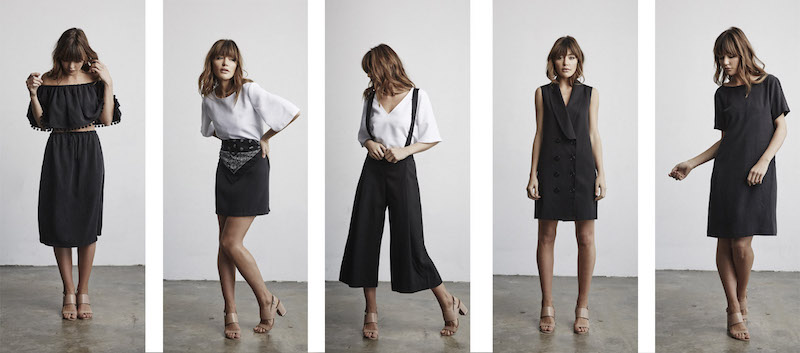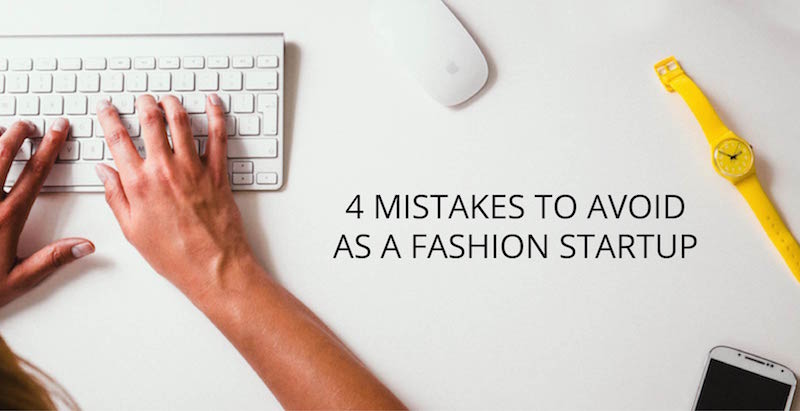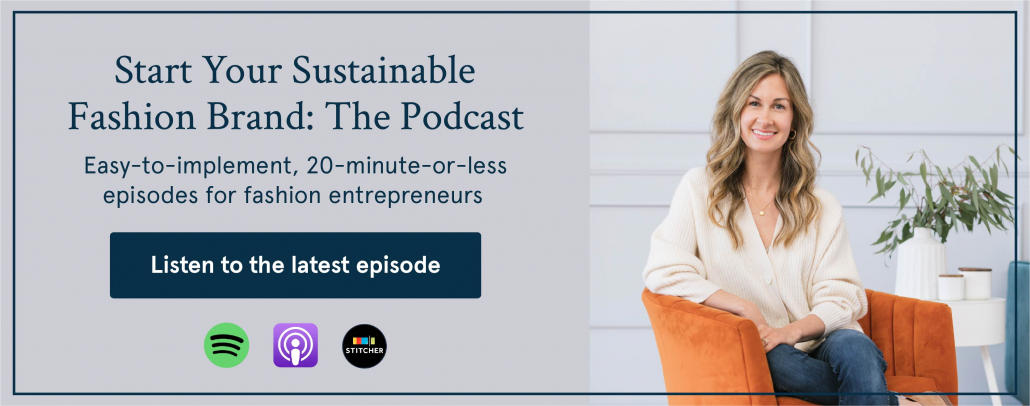Over the past two months, a certain Factory45 entrepreneur has taken our community by storm.
“How did they move so fast?!”
“Their campaign was incredible!”
“I can’t believe how gorgeous their photography was!”
This community has blown me away with their support and kind words for the latest success story to come out of Factory45.
Yes, I’m talking about VETTA, the five-piece capsule collection that can make up a month’s worth of outfits. All sustainably sourced and ethically made in New York City.
So… how did they do it?
That’s what I want to share today with the hope that you’ll see inspiration and motivation in what VETTA created and take away some wisdom to apply to your own startup.

I first met Cara Bartlett, one of VETTA’s co-founders, at a coffee shop in South Boston over a year ago.
At the time, I was in the middle of my second Factory45 cohort and Cara had recently left RueLaLa to go full time with her ethical fashion blog, Bien Faire.
We chatted about the fashion scene in Boston, she gave me some recommendations for ethically-made wedding dresses, and we parted ways with plans to host some sort of future event together.
Several months later, when I opened applications for the Factory45 Fall program, I was so surprised to see that Cara had applied for her company, “TBD.”
While she and her co-founder, Vanessa, had been brewing up dreams of starting their own line together, they needed help finding sustainable fabrics, choosing a manufacturer and coming up with creative ways to market the brand for a Kickstarter launch.
I guess you can say the rest is history. I accepted Cara into Factory45 and from day one, she hit the ground running at full speed ahead.

Here’s what I’ve observed, after working with Cara for the past six months, that can be attributed to VETTA’s success:
>> Cara was working on VETTA full time. My philosophy and the mantra that my Factory45’ers hear over and over is: You have to take the entrepreneurial journey that’s right for you. Is it possible to launch a brand in six months? Yes. Is it possible for everyone? No.
Many of us have obligations, work, children, partner’s and other life “requirements” that take priority over our businesses. If you’re serious about launching a brand on the timeline you’ve laid out, though, then something has to give.
You either have to accept the fact that your brand will take 1-2 years to launch or you have to commit to dedicating everything you’ve got to the 6-8 month timeline you’ve laid out for yourself.
In the past, Cara has driven from Boston to New York City five weekends in a row. She’s flown to South Africa to meet with her co-founder in person. She’s traveled to Los Angeles for a whirlwind few days to shoot her lookbook and video.
When planning your launch timeline you have to figure out what’s right for you. Cara and Vanessa knew they wanted to launch a March 1st Kickstarter from the day they submitted their Factory45 application on September 21st. They kept their eye on the prize and didn’t miss their mark.
>> They built an audience before they launched. VETTA is unapologetically not for everyone. Cara and Vanessa identified a niche and an ideal target customer and invested six months into building a very specific and dedicated audience.
They grew their email list, Instagram following and Facebook page and with the help of beautiful photography, they strategically “teased” out their upcoming launch. They were able to get their target market excited about what they had to offer so that “early adopters” were ready and excited to purchase the VETTA collection as soon as it was available for pre-sale.

>> They leveraged their network. During and after their campaign, VETTA caught the attention of some impressive press. While some of that was organic, for example The Boston Globe, Cara has told me they unabashedly called upon friends of friends of friends for help.
They networked their way into a meeting with VOGUE to start developing a relationship with the magazine. They tapped into the Factory45 network of suppliers and manufacturers to set up their supply chain. And as a result, they’re working with the same factory in NYC who creates many of Rag & Bone’s garments.
If you are creating something beautiful, intentional and good for the world, people will want to be apart of it. Don’t let fear get in the way of making the “ask.”
>> They had a “share-worthy” story. VETTA could have gone one of two ways. 1.) A collection of sustainably-and-ethically-made womenswear, 2.) 5 versatile pieces that mix + match to create a month’s worth of outfits.
Which version is more compelling? The difference in those two soundbites drastically affects your chance of becoming a “share-worthy” story. When it’s interesting, different and easy to communicate you’re much more likely to tell a friend about it.
I’ve written before about launching a Kickstarter campaign for my first company, {r}evolution apparel, and I can’t emphasize enough how important it is to leverage a concise message and story to represent your brand.
VETTA did just that and gained the attention of WHO WHAT WEAR, Brit + Co., Darling Magazine, BostInno, VentureFizz, The Wall Street Journal and other well-known press.
More than that, though, they gained the attention of 527 new customers.

This is all to say that VETTA reached its $30,000 goal in five days and was featured by the Kickstarter Staff as a “Project We Love.”
By the end of their 30-day campaign, they had nearly tripled their goal to raise $88,954. Shortly after, Cara and Vanessa competed in the Sak’s Emerging Designer Showcase and won. Their second capsule collection will be available in Sak’s Fifth Avenue stores in the near future.
It goes without saying that I’m so proud of what VETTA has been able to accomplish and I want to emphasize that this kind of success is not out of reach for the aspiring entrepreneurs who may be reading.
It’s not going to be easy — but as Cara and Vanessa can attest, it will be worth it.
Photos courtesy of VETTA and Sak’s Fifth Avenue
















 “I wish I’d known that, no matter how much you love the product, you absolutely have to ensure that: (a) you can get it produced fairly simply/easily (to avoid loss of time/sleep and potential burnout); and (b) the margins are healthy enough that you can not just sustain, but actually grow, the business (or you at least see a clear path to get the margins to that place).
“I wish I’d known that, no matter how much you love the product, you absolutely have to ensure that: (a) you can get it produced fairly simply/easily (to avoid loss of time/sleep and potential burnout); and (b) the margins are healthy enough that you can not just sustain, but actually grow, the business (or you at least see a clear path to get the margins to that place).  “I wish I had known that fashion is about breaking the rules, not following them. That theory is applied to design all the time, but the business of fashion should also be about challenging the status quo, not following the calendar, not following what everyone else does and not doing as we’re told. That’s the only way change will happen in this industry and I wish I had known that sooner.”
“I wish I had known that fashion is about breaking the rules, not following them. That theory is applied to design all the time, but the business of fashion should also be about challenging the status quo, not following the calendar, not following what everyone else does and not doing as we’re told. That’s the only way change will happen in this industry and I wish I had known that sooner.”  “I wish I had known which parts of the sampling and manufacturing process would be good for me to figure out on my own and which steps are vital to have carried out by an experienced professional. There were some things I realized I should have done myself, and a few things that would have saved me time and money in the long run had I outsourced.
“I wish I had known which parts of the sampling and manufacturing process would be good for me to figure out on my own and which steps are vital to have carried out by an experienced professional. There were some things I realized I should have done myself, and a few things that would have saved me time and money in the long run had I outsourced.  “I wish I had known how much clarity I had starting off—that I felt content and confident knowing what I was setting out to do and who I was trying to speak to. Had I taken stock of this intuition at that early stage, it would have been much easier as my audience grew to know when I’m being true to myself and the narrative I am trying to tell. Even now, as I slowly start to roll out new work, I realize that the hardest thing I have to do in this (post) post modern, socially nomadic world we live in is to just fiercely be myself.”
“I wish I had known how much clarity I had starting off—that I felt content and confident knowing what I was setting out to do and who I was trying to speak to. Had I taken stock of this intuition at that early stage, it would have been much easier as my audience grew to know when I’m being true to myself and the narrative I am trying to tell. Even now, as I slowly start to roll out new work, I realize that the hardest thing I have to do in this (post) post modern, socially nomadic world we live in is to just fiercely be myself.”  “I wish I had known just how important it is to have an audience to launch to. If you want a product-based business, first start by generating a following. This could be through a blog, via Instagram or Twitter. Build up a community of people that is in-line with your future product. When you’re ready to launch you’ll have an invested group of people you can turn into customers.”
“I wish I had known just how important it is to have an audience to launch to. If you want a product-based business, first start by generating a following. This could be through a blog, via Instagram or Twitter. Build up a community of people that is in-line with your future product. When you’re ready to launch you’ll have an invested group of people you can turn into customers.” “I wish I had known that finding great US manufacturing is kind of like speed dating. If it doesn’t seem like it’s going to work out, make a polite exit, but move on. Their existing operations shouldn’t have to adjust much at all to achieve the product to be produced. It should be a very close fit from the very beginning.
“I wish I had known that finding great US manufacturing is kind of like speed dating. If it doesn’t seem like it’s going to work out, make a polite exit, but move on. Their existing operations shouldn’t have to adjust much at all to achieve the product to be produced. It should be a very close fit from the very beginning.








